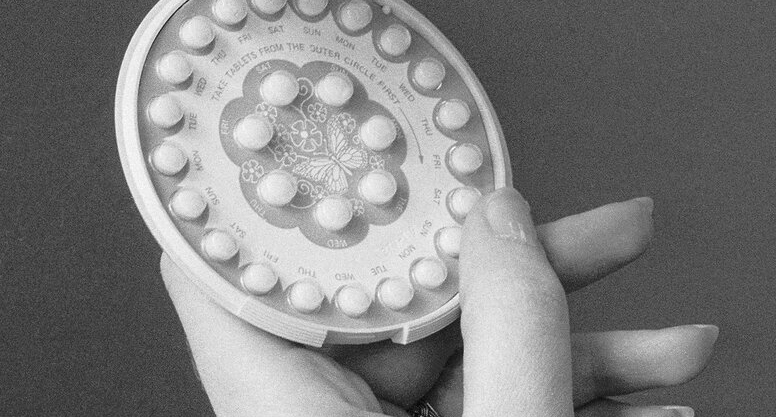By Izzie James.
When discussing contraception with friends, there will often be someone who has a negative story to tell. Experiences of acne, mood swings, depression and weight gain often come up when talking about the contraceptive pill.
Although this isn’t the case for all women, and the pill can be an effective option to prevent pregnancy, it is difficult to ignore the long list of side effects that taking the pill can have. Recently, a viral TikTok trend where women held up this list of side effects to the camera sparked a wave of frustration, with comments comparing the list to the ‘size of a large blanket’. It is hard to comprehend that a contraceptive option that is used so widely and by so many young women can have this many adverse impacts on the female body.
It should be made clear that I am in no way discouraging the use of contraception or saying that the birth control pill should not be used. Sometimes pills can even be helpful in combating problems such as acne, or reducing painful period cramps and heavy bleeding. However, I think that our attitude towards the impacts of the pill should be improved, and we should be attempting to dismiss the stigma around discussing birth control. Starting a broad conversation about the contraceptive pill and making sure that it is the correct option for you is essential for your health. Both mental and physical health should not be compromised by birth control, especially as educating women on their options can make an important difference.
Too many women settle with the pill they are first prescribed, thinking that experiencing effects such as acne, weight gain or tiredness is a small price to pay for preventing an unwanted pregnancy. A large number of women also experience stomach cramps from period pains, meaning that they’ll be used to the uncomfortable realities of the female body. However, being aware that your current pill is not suited to your body can make a world of difference.
For women considering taking a combination pill, knowledge of something called ‘the pill ladder’ can be very useful. Combination pills contain both oestrogen and progestogen, however there are many different types, some containing more oestrogen, some containing more progestogen (it should also be noted that there is the option of a progestogen-only pill). If a woman takes a combination pill with higher levels of oestrogen, and experiences effects that can be blamed on this, she should consider taking a pill with lower levels of this hormone. The same can be said for progestogen dominant combination pills. This means the woman would move along ‘the pill ladder’, moving left for less oestrogenic impacts and right for less progestogenic impacts. An example of this would be if a woman is experiencing acne and mood swings on a progesterone dominant pill such as Microgynon, it is worth moving right across the ladders to a more oestrogen dominant pill such as Cilest.’ (This is quoted from the ‘GP Notebook’, which is linked below and highly recommended for more in-depth detail.)
I decided to open up a conversation with my housemates. These opinions are not being included to discourage anyone from taking the birth control pill, and I would like to preface them by stating that we all agreed that access to birth control is extremely important for women today. One girl emphasised that she found the birth control pill to be effective and stress-free, and that she did not experience any negative side effects. However, the general consensus of the group was that to improve women’s experiences on the pill, we all need to prioritise education, conversation and support.
It was clear that some of my housemates thought that the pill was prescribed to them flippantly, and one claimed that she was advised to persevere through any immediate symptoms, as they could ‘settle’ after some time. She now regrets staying on this pill for so long, as she later found another form of contraception much more compatible with her body. She added that taking the pill becomes built-in to a daily routine, so much so that transitioning off it seems like a huge step. This leads to further worry about the sudden hormonal change that women could experience all over again, even though, for my housemate, this transition actually helped her find a more suitable form of contraception.
Another one of my housemates spoke about how she had gone to her school’s medicine centre with some friends, and they were all automatically prescribed the same pill. Looking back on the experience, she spoke about how they all would have had different hormonal makeups, and that their individual reactions to this pill would have been different. However, none of them were told that a check-up on their birth control journey was necessary. She thought that a scheduled check-up with her GP would have been very useful, as she could have listed any side effects that she had experienced and they could have considered whether that specific pill was right for her.
We all agreed: the realisation that you do not have to settle for birth control has only come to us in our twenties. Although the fault does not lie with us, we all wished that we had been educated on information like ‘the pill ladder’, so that we could have had more productive conversations with our GPs about what was best for our bodies. It is therefore vital that young girls who want to begin taking the contraceptive pill have the right information and education to put their bodies first.
Recommendations:
https://gpnotebook.com/en-gb/simplepage.cfm?ID=x20130725203135685340
Sophie Smith Galer’s ‘Losing It: Sex Education for the 21st Century’
‘Your brain on birth control.’ From Women’s Health Weekly (available through Durham online library)

